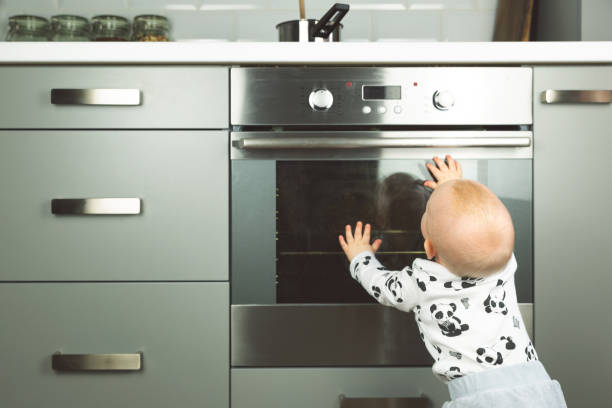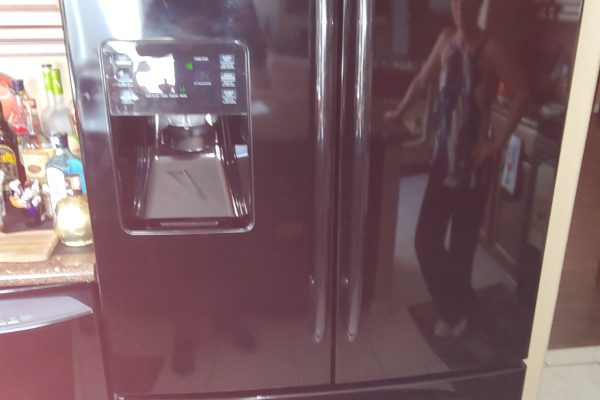Condensation in the oven can be a frustrating issue for home cooks, leading to soggy or unevenly cooked dishes and potentially affecting the performance of the appliance. While some amount of condensation is normal during cooking, excessive moisture buildup can disrupt the cooking process and result in less-than-desirable outcomes. In this article, we’ll explore the causes of condensation in the oven and provide practical strategies to help you avoid it and achieve better cooking results.
Understanding Condensation in the Oven
Condensation occurs when moisture in the air comes into contact with a cooler surface and forms water droplets. In the oven, condensation typically occurs when hot, moist air inside the oven comes into contact with cooler surfaces, such as the oven walls, door, or racks. This can happen during baking, roasting, or broiling when steam is released from the food being cooked and condenses on the cooler surfaces of the oven.
Causes of Condensation in the Oven
High Moisture Content in Food:
Foods with high moisture content, such as casseroles, roasts, or baked goods, release steam as they cook. This steam can contribute to condensation in the oven if not properly vented or managed during the cooking process.
Inadequate Ventilation:
Poor ventilation inside the oven can trap moisture and prevent it from escaping, leading to condensation on the oven walls, door, or racks. This is especially common in older or poorly designed ovens that lack proper airflow mechanisms.
Preheating the Oven with Moisture:
Some cooking methods involve preheating the oven with a dish containing water or other liquids to create steam. While this can help create a humid environment for certain recipes, it can also contribute to condensation if not properly managed.
Strategies to Avoid Condensation in the Oven
Preheat the Oven Properly:
To avoid condensation during preheating, allow the oven to reach the desired temperature before placing food inside. Preheating the oven helps warm up the oven walls, door, and racks, reducing the risk of moisture buildup when cooking begins.
Use a Ventilated Lid or Foil Tent:
When cooking foods with high moisture content, such as casseroles or roasts, use a ventilated lid or foil tent to allow steam to escape while still retaining moisture. This helps prevent excessive moisture buildup inside the oven and reduces the risk of condensation on the oven surfaces.
Use a Baking Stone or Pizza Stone:
Placing a baking stone or pizza stone on the bottom rack of the oven can help absorb excess moisture and regulate temperature, reducing the likelihood of condensation. The stone also helps distribute heat more evenly, resulting in better cooking results.
Avoid Opening the Oven Door:
Opening the oven door frequently during cooking can cause fluctuations in temperature and humidity, leading to condensation on the oven surfaces. To minimize moisture buildup, avoid opening the oven door unnecessarily and only check on the food when necessary.
Use a Fan-Assisted Oven:
Fan-assisted ovens, also known as convection ovens, circulate hot air evenly throughout the oven cavity, reducing the risk of hot spots and uneven cooking. The improved airflow helps prevent moisture buildup and minimizes condensation on the oven surfaces.
Clean the Oven Regularly:
Regular cleaning of the oven helps remove grease, food residue, and other debris that can contribute to condensation and interfere with proper airflow. Use a mild oven cleaner and follow the manufacturer’s instructions for cleaning the oven interior, racks, and door.
Check the Oven Seal:
Inspect the oven seal, also known as the door gasket, for signs of wear or damage that may allow moisture to escape. Replace any worn or damaged seals to ensure a tight seal and prevent moisture buildup inside the oven cavity.
Ventilate the Kitchen:
Proper ventilation in the kitchen can help remove excess moisture from the air and prevent it from condensing inside the oven. Use exhaust fans or open windows to promote airflow and reduce humidity levels while cooking.
Condensation in the oven can affect cooking results and compromise the performance of the appliance if not properly managed. By understanding the causes of condensation and implementing practical strategies to avoid it, you can achieve better cooking results and maintain the optimal condition of your oven. Whether preheating the oven properly, using ventilated lids or foil tents, or investing in a fan-assisted oven, these strategies can help reduce moisture buildup and prevent condensation, ensuring delicious and evenly cooked meals every time. Incorporate these tips into your cooking routine to keep your oven dry and your dishes perfectly cooked.
Access our appliance repair experts today! Reach out to a skilled technician from Poway Appliance Repair Service Center via phone or schedule your service online.
Our service center operates 24/7, allowing you to effortlessly arrange a suitable repair time. The specialist will arrive promptly, conduct a diagnosis, and if needed, provide on-site repairs within 1-2 hours, if you prefer. Experience top-notch service at a budget-friendly price!
Contact us:


